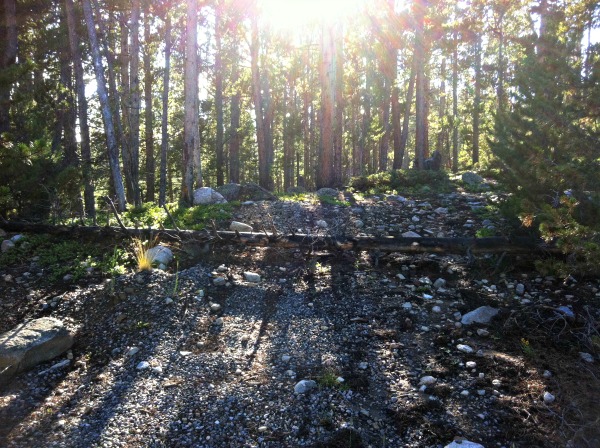 We’ve settled back into mountain life now after about two months. The weather has been a beautiful summer mix of cloudless blue skies and 75 degrees, and cool mountain rain that rolls in from the West in the afternoons.
We’ve settled back into mountain life now after about two months. The weather has been a beautiful summer mix of cloudless blue skies and 75 degrees, and cool mountain rain that rolls in from the West in the afternoons.
It’s been an especially good wildflower season. Even as September approaches, there are still carpets of white, yellow and lavender mountain daises and large swaths of bright purple fireweed. The sweet scent of pink and violet clover fills the air on our walks.
The monsoon moisture has also kept the forest floors thick with green, and the meadows are thigh-high in bunchgrasses and cattails. Trout are jumping out of the crystal-clear mountain lakes, daring us to try to reel them in.
And in just our short time back, we’ve already seen an abundance of wildlife, including moose, black bears, foxes, coyotes, a mountain lion, rabbits, and beavers — not to mention the plethora of birds and chipmunks and squirrels who keep the forest humming.
It’s a bit like living in a nature photographer’s dream. And, honestly, it’s where I feel the most alive.
But is it home?
Obviously, I haven’t always lived in the mountains. I grew up in the flatlands of South Texas. And I love those flatlands.
I love the people, the stories, the food, the history, the music, the Texas sky. The smell of mesquite-smoked barbecue. The feel of crisp, dried grass under your bare feet on a hot summer day. The mixing of Mexican, German, Czech and other cultures. The homemade tamales. The kolaches. The sound of polka music on the local radio station. The click-click-buzz-pop of grasshoppers flicking about and attaching themselves to the porch screen door.
I love all the little idiosyncrasies that make that place special. The small-town courthouses and main streets. The Lone Star beer, the dancehalls, the oil wells, the old churches, the Stetsons and belt buckles and boots, the cattle and horses lazing under hundred-year-old oak trees.
Did I mention the food?
And of course, most importantly, all of my family members, including my Mom and Dad — whom I cherish — still live there. In the house I grew up in.
But is that home?
I’ve always thought of “home” as a place where you feel most comfortable. Where you can wrap yourself in familiarity and know that someone always has your back. A place you know like the back of your hand.
And in those terms, South Texas is all that and more.
Yet.
Here feels right for me, and it has for a long time. Like in a good novel, this particular cabin and mountain have become the physical place where the narrative arc of my life moves forward. It’s as much a part of my story as my friends, my job, my writing, my dogs, and even my son and husband. I think that’s why I felt so lost when we moved away for a couple of years.
If you don’t count those years we spent in the foothills, we’ve lived on this mountain now for 11 years or so. That’s long enough to feel that sense of familiarity and comfort, right? Instead, here, I find myself wrapped in something much different.
A kind of wildness maybe? A feeling that there are systems in place in this world that are much larger than myself? A feeling of wanting to uncover all the things I don’t know yet?
Yes, all of those things.
Some people say home is wherever their spouse or children are, that just being with them is all it takes. But I’ve learned from experience that even though you are in the presence of people you love more than anything in the world, there can still be a hole … a missing piece of the puzzle.
So what does define home?
Is it the place that warms your threadbare soul, like my mama’s chili on a rare cool day in South Texas? A place that knows who’ve you’ve always been?
Or is it a place that pushes you, like a rippling and rushing mountain creek full to its banks from spring runoff? A place that knows who you’re still becoming?
I don’t have the answer. But I’d love to hear your thoughts, too. Meanwhile, I have firewood to chop. Snow’s in the forecast.
PS: This is one of the themes explored in my novel, Blue Straggler. I keep hoping that, through writing, I’ll figure some of this stuff out.
If you want to read more of my writing, I send out the occasional newsletter. Sign up here:

















